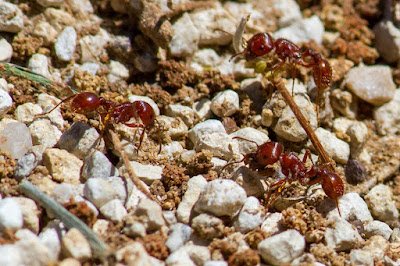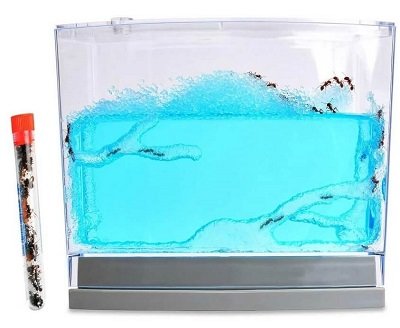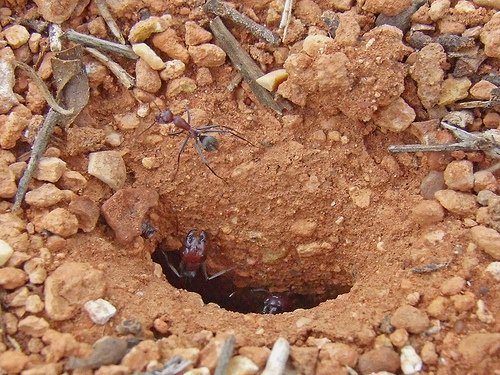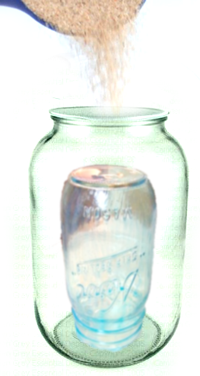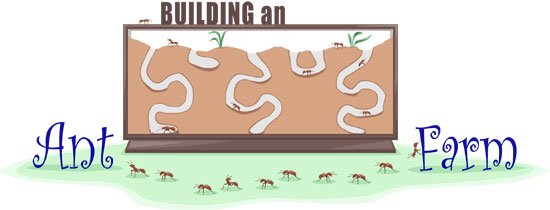What Are the Benefits of Owning an Ant Farm?
If you're considering starting your own ant farm, you may be wondering about the benefits. After all, this is the first time you're keeping ants. Here's some information to help you get started. First of all, understand the differences between an ant farm and a natural habitat. Next, learn how to choose the right ant farm for your needs. After all, you're not the only one who wants to know the benefits of keeping ants!
What is an Ant Farm?
If you have ever wondered what an ant farm looks like, you are not alone. Ants are a popular form of entertainment, and they are relatively inexpensive to buy or make yourself. Unlike most creatures, ants are very vulnerable to damage, and if you handle them roughly they may collapse their tunnels. To avoid damage, use a glass jar, and if possible, use a double-glazed window. For a more natural environment, fill the jar about half way with sand. Plant soil contains much less weight and requires shaking off.
To create your own ant farm, start by purchasing a couple of jars with lids. Place one small jar in the middle, and another smaller one on the bottom. Make sure there is enough space in the center for the ants to build their tunnels and lay their eggs. You can purchase a large container to house a large ant colony, or a tiny one for your home. You can also use an aquarium as an ant farm, as long as it is clean and free of defects.
Purchasing an ant farm for your child is a great way to introduce them to the world of insects. They are easy to care for, inexpensive to buy, and mesmerizing to watch! You can even buy a kit, which includes the queen ant. If you don't want to keep the queen ant, you can simply buy a kit containing a single ant. But you should note that if you do not have a queen ant, you will end up with a colony that won't survive for three to four weeks.
The ant colonies are unique. There is a genus that separates ants from each other. Ants have complex communication systems and can use their environment in ways that few other animals can. Insects from different families should not settle in the same farm. The smell of an anthill can help you identify the species and genus. The smell of an ant colony can be quite distinctive. It can be attributed to its unique smell.
A gel-filled ant farm is very similar to an aquarium. It is not filled with water, but rather with a clear gel that provides the insects with both a living environment and food. The gel can be poisonous, so it is important to use a safe product. Luckily, most of these products can be purchased online, and they come in various sizes and designs. Most of them can be purchased remotely, and the sellers will ship them directly to you. The majority of ordinary pet stores don't carry ant-filled formicariums.
There are two ways to locate anthills: improvised ant hills and purchased ones. If you're not comfortable with improvised ant hills, you can always go to a store. The cost of building an ant farm will be lower, but it will look no worse than an ant farm made in a store. You can also buy anthills that have already been built.
Ant colonies are social animals. They share common tasks. Queen ants lay their eggs in fungus, and worker ants tend to the garden. Queen ants lay their eggs in fungus and feed on the fungus. In addition to these, queen ants produce a large quantity of pheromones, while worker ants tend to lay eggs. There are four types of ants in an ant colony.
If you'd like to own an ant farm, there are many advantages to owning one. Ants are friendly, and the work they perform is fun. Plus, taking care of them encourages independence and responsibility. Additionally, ant farms are extremely easy to maintain. And if you're not comfortable caring for the creatures, you can buy pre-grown ants and a collection box for them. The price of these ants can range anywhere from $15 to $120.
Among the most famous ant farms, Uncle Milton's is the most popular. This is an ant farm created by Uncle Milton Industries, a California-based company that owns the 'ant farm' trademark. Its products are sold in major toy stores, and they require a special coupon to receive ants. This way, they can enjoy the experience of watching ants in a natural habitat and learn something about ant behavior.
When buying ants, you must remember that most of the ants in a home ant farm are not queens. These are semi-claustral and fully-claustral. You'll have to place the queen in a larger container to serve as a temporary ant nest. Fill the other container with food and water. The ant workers will forage for food. In time, you can reward the workers with food.
Ant habitat
Changing the ant habitat will also help your garden flourish. Not only will it provide your garden with the nutrients it needs, it will also keep out other pests. An ant habitat can be anywhere. You can choose to build it outdoors or indoors. In the summer, ants will be active in parking lots, sidewalks, and even inside your home. Fortunately, most species of ants are harmless and don't pose a threat to humans.
Native ants do not require heat and will be content in a cool environment. Use a glass or plastic nest tank filled with sand loam mix and dampen it regularly to hold together their nest structure. A small nest tank of 10cm x 20cm will hold one colony for two or three years, and you can always add more as the population grows. However, make sure the temperature of the tank does not get too low as the ants may hibernate.
Water is another essential ingredient in ant habitats. As ants are slender, they are unable to store a large volume of water in their stomach. Make sure to keep the soil moist and add water as needed. Make sure not to over-water your ant colony as it can result in a dead colony. It's also important to provide water for your colony as well as its queen. If you don't see ants around your ant colony, it's time to change the habitat.
A study in Florida found that a single newly mated fire ant queen greatly increases the chances of establishing a colony. In addition to the study's findings, the researchers manipulated the habitat by changing ants' natural environment in the experimental plots. For example, they introduced a new species of ant, a monogyne fire ant, which greatly increased the odds of colony establishment. They also reduced the native ant community to make it more favorable for the newly mated fire ants.
After mating, female ants find a suitable nest and mate. Fertilized eggs hatch into workers, while unfertilized ones develop into drones. The ants undergo complete metamorphosis, beginning as larvae that are unable to move around. The workers feed the larvae by using liquid foods or trophallaxis. The larvae are then given solid foods later in their life. If the ants are healthy and happy, the entire process will take about a week.
In addition to the queen, ant colonies are important for the reproduction of young ants. After mating, the queen will lay new eggs. When the eggs are fertilized, the queen ant will lay the eggs for a new colony. A queen will usually be near other colonies and lay an egg, so it's important to keep them within a certain distance from one another. You can inspect ant colonies for the queen to make sure they're not in competition with each other.
Ants vary in size and behavior, but their diet is largely similar among species. The workers carry food back to the nest with them, sometimes carrying 10 times their own weight. Because of this, they are able to communicate via chemical signals. They can also send and receive messages through touch. They generate stridulations by rubbing various body parts together, and each one relays different messages. The queen and the larvae will share the same diet.
The classic ant habitat is made of sand and water. Poking holes in the sand requires a small piece of tool or straw. The ants will be attracted to the moist sand, and you can observe them tunneling through it. While you're observing the ants, you can even buy a live ant to observe the life cycle. The benefits of this method are obvious. Not only do the ants benefit, but the kids will love the experience.
The ant species that you see will depend on where you see it. Ants live on every continent except Antarctica. They build nests underground or above ground, and some species nest in holes in the ground or wood. In addition to nests, they may build structures inside buildings, such as walls, ceilings, or counters. They are also quite clever at using plant matter to build their nests. They make it easy for them to survive the Cretaceous-Tertiary mass extinction 65 million years ago.
Some people keep ants as pets because of their colorful and aggressive nature. However, because these ants are highly dangerous, they are not recommended for beginners. The species of ant that you keep should be carefully chosen. You don't want to endanger your family by getting a pet that's dangerous. Just don't forget to check the food and water sources. Once you've chosen the ants' habitat, make sure they're fed and watered.
How to Start Your Own Ant Farm at Home
The first step in starting an ant farm is to gather the ants. Collect ants from your yard or a nearby area. You can use the jar for storage, but don't place it in direct sunlight as it can get too hot. Make sure to fill the inner jar with air so that the ants have a narrow space to dig their tunnels. You can also put bird seed, grass seed, or sugar water into the jar.
When it comes to breeding ants, you need to find a queen ant. Without the queen, a colony of ants will not reproduce. The queen lays the eggs and produces all of the workers. You can try to get the queen by destroying the natural ant colony first. Once you have the queen ant, you can begin your ant farm. Once you have a queen ant, you can then get worker ants.
When starting your ant farm, you need to provide your ants with the right kind of food and environment. Ants are foragers and must find a suitable food source in the wild. Don't make the mistake of providing too much food, because the ants won't eat it. If you want to keep your ants healthy and happy, you should introduce more food gradually. When adding food to your ant farm, start with small amounts and add more as the colony grows.
Once you've chosen the type of food, a simple process will give you the necessary tools for building an ant farm. Ants love sugary foods, so it's important to provide them with a source of that. Honey, sugar, or even insects like spiders and crickets can provide them with their food needs. To avoid spreading germs to your ants, it is a good idea to kill the spiders before you transfer them to your ant farm.
While a simple test tube setup will help you raise a queen ant, it is still necessary to identify the type of queen ant. Some queens don't require food during their founding, but others do. It is also essential to identify the species of queen you plan to keep. If you have a semi-claustral queen, you can skip this step. Then, you need to persuade the queen to enter the test tube, plug it with cotton.
Once you have your queen ants, you can put them into the ant farm with the eggs. These ants will lay eggs and begin to reproduce within a week of being placed in the ant farm. If they find their new home, you should place the nest in a dark and closed environment. This way, the ants will be protected from predators and the environment will be conducive to their reproduction.
There are many options for creating an ant farm. You can choose from gel-based ant farms, which require less maintenance, and artificial sand-based ant farms. However, be sure to choose a proper substrate for your ant colony - sand is more likely to collapse if jostled. Similarly, some ants don't respond well to an unfamiliar medium, so they'll not thrive in a gel-based ant farm.
You can buy a kit that includes all the ingredients you need to start your own ant farm at home. You can find several kits in stores and online. Make sure to choose the one that suits your needs and budget. If you're a beginner, you can buy an Uncle Milton Giant Ant Farm Kit, which is a reproduction of the popular 1950s ant farms. These ant farms are suitable for kids and adults alike, and are recommended for classrooms.
First, prepare your CD case. CD cases have two small openings that are perfect for ant housing. The entry point should be on the side of the lower dirt CD. Now, you can attach the soil with the packing tape. Be careful not to overcut the hole, as it could crack. After all, you don't want the ants to climb out. A good tip when setting up your ant farm is to use a CD case that has two openings, one at the bottom and the other at the top.
How to Choose the Right Ant Farm for Your Needs
Before you start building your ant farm, you must know how useful it is to you. The ant farm will need a substrate that is moist and loose, where they can tunnel. The best ant farm will have chambers that are about twice as wide as the queen. You can use any shape you like, but the chambers should be big enough for the ants to pile up brood and move around freely.
Regardless of the location, it is important to know about the type of ant nest you're getting. Some ants dig colonies in the ground, while others nest in wood. In the latter case, they're usually easier to capture because the queen and workers live under the wood. Depending on the species, you may find that the ants aren't nesting in a log at all.
While it's possible to obtain queen ants legally, these insects can be difficult to transport. To acquire these ants, you can try to find a young queen during its nuptial flight season. Young queen ants will have wings during mating season and will mate with several males. After mating, queen ants will chew off their wings and seek out a location where they can start their colony.
If you're not sure how to start an ant colony, you can try purchasing a kit. Kits often include a queen ant so that you don't have to dig into the nest. Without a queen ant, the colony will die within three to four weeks. However, without a queen ant, the colony will simply be a layer of dirt for the ants to live in.
While catching queen ants can be a cruel practice, you should understand the commitment. A queen ant can live up to 15 years and is responsible for reproducing and expanding the colony. Even if you are able to catch the queen, most colonies will die with her. If you're planning on keeping them, you should keep in mind that they are not suitable for hobbyists.
When buying an ant farm, make sure it includes all the features you need. Ant colonies need the proper environment and a steady supply of food and water. You need to know the type of food the ants need to thrive. Certain species need wood and syrup while others do not require these. If you buy a kit that isn't compatible with the ants, the food will not be eaten and can cause mold.
The first thing to remember when purchasing an ant farm is the type of food that the ants will need to survive. They'll need food and water for several days before they're fully claustral. You can buy store-bought insects, but be sure to check them for mites. Crickets are particularly prone to mites and can be dangerous. If you can't find a live insect, you can try using Q-tips to feed the ants. The Q-tips will lock in the food, but you can also put it on a piece of tin foil. The queen ants will eat it when it's full.
You should also remember that the ants need fresh food every two to three days. You should choose protein-rich insects and meaty kitchen scraps for young ones. Sweeter, sugary things are good for older ants who forage above ground. Remember that ants have two stomachs, which means that they need food from other ants to stay healthy. You can buy a specialized ant farm online or at your local pet store.
The best ant farm for beginners is a wood-based one. Wood ants do not roam far and are very easy to keep. You can feed them with dead insects, honey, and fruits. They'll be very happy in this environment. However, you should be aware that wood ants can be very destructive. You can also keep them as pets, but the food should be balanced and organic.
The habitat of the ant farm should also have clear sides. Without these features, your ant colony may collapse or have gaps that are too small. Ant farms should also be in a shaded location between 60 degrees Fahrenheit and 70 degrees Fahrenheit. In the case of sand ant colonies, you can even move them around. Using gel ant habitats can be helpful, as they can be moved around as needed.
The best ant farm will have a scouting ant trail. They'll follow the chemical trail they leave behind and inspect the colony. If the ants are not able to locate the colony, you should take action. There's no point in having ants living in a house with mold, because these insects can be dangerous. If you find mold in a formicarium, you should immediately remove the colony and purchase a new one.
